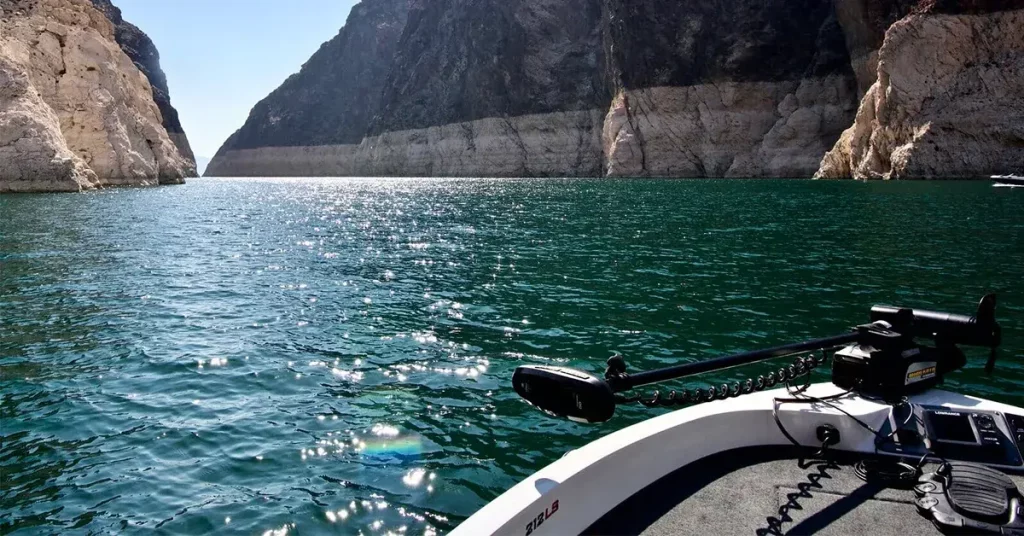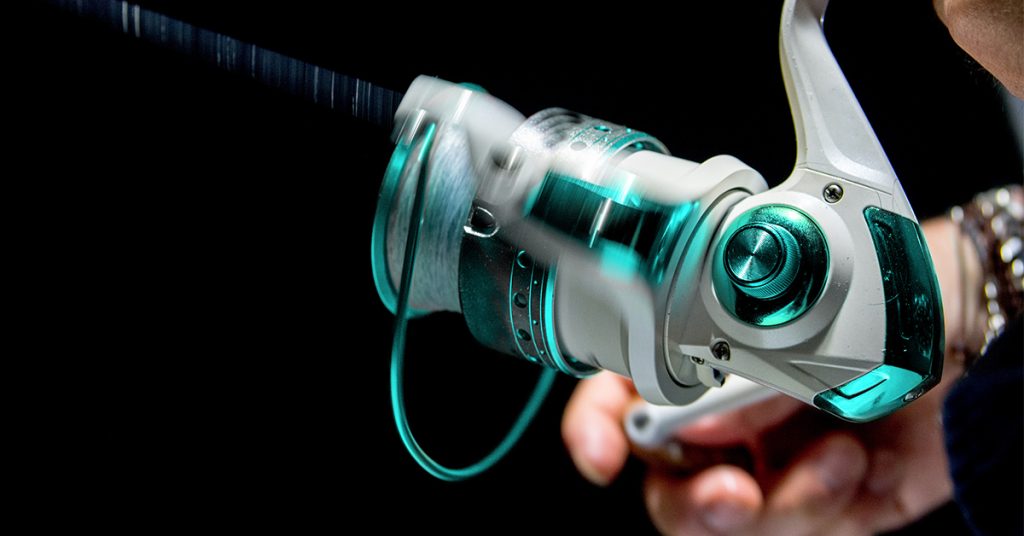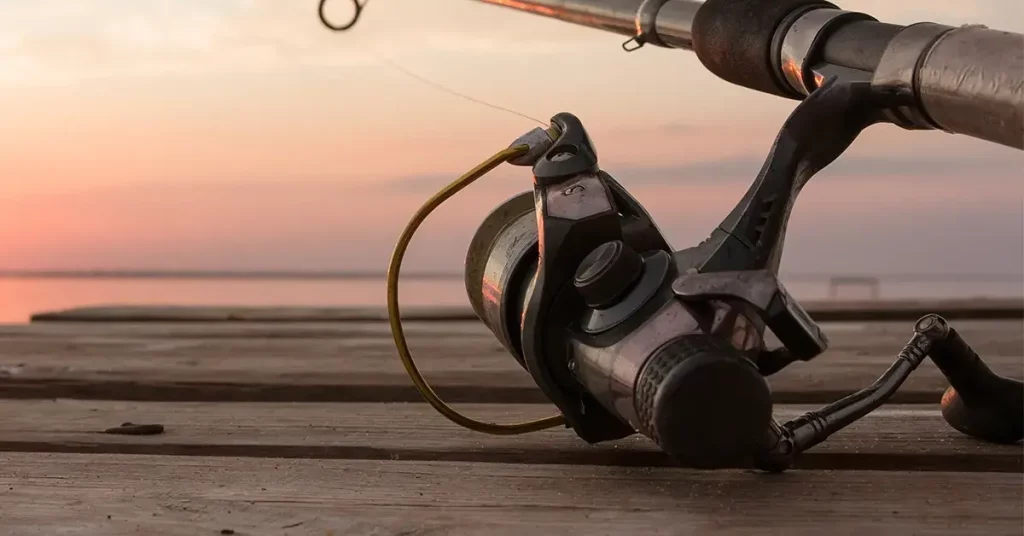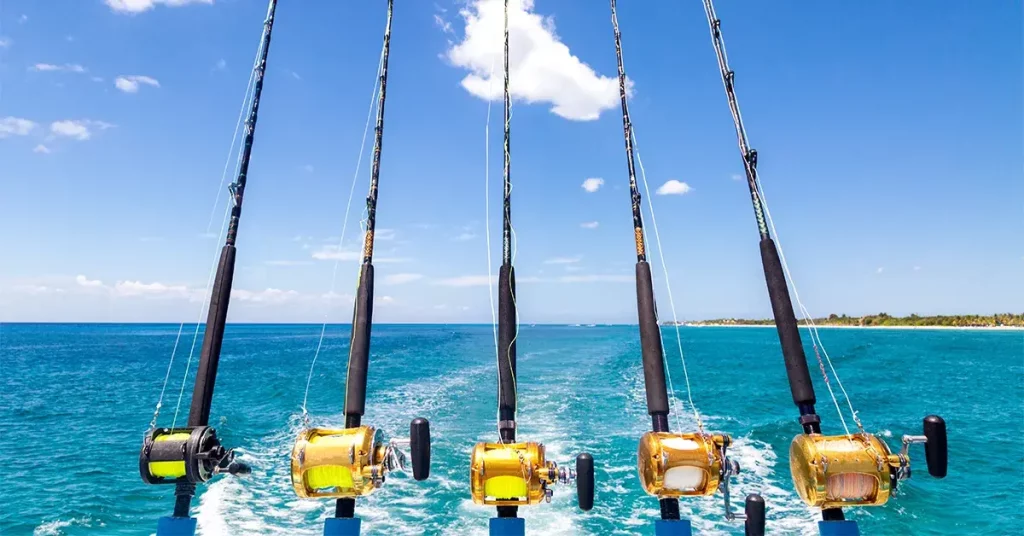If you’re after ultimate control over your fishing boat – you can’t beat a bow mount trolling motor. These cutting-edge motors mount to the front of your boat with a bolt-on bracket and propel your craft by pulling it through the water rather than pushing it.
This increases the amount of control you’ll have over your boat while trolling, drifting, and changing direction. Like other trolling motors, these motors have the advantage of fine-tuning your trolling speed, freeing up your hands for fishing, and stealthily approaching fish without spooking them.
This increases the amount of control you’ll have over your boat while trolling, drifting, and changing direction. Like other bow mount trolling motors, these motors have the advantage of fine-tuning your trolling speed, freeing up your hands for fishing, and stealthily approaching fish without spooking them.
There are a wide variety of bow mount trolling motors available for both salt and freshwater use. They feature different control mechanisms, thrusts, shaft lengths, mounting options, and extra features. I’ll break down the different types, their respective strengths, and weaknesses, and help you find the ideal one for your needs.
Quick Answer: 5 Best Bow Mount Trolling Motors
Best Overall: MotorGuide X3 Bow Mount Foot-Control
Best Electric / Wireless Steer: Minn Kota PowerDrive with i-Pilot Control
Best High End: Lowrance Ghost
Best Saltwater: MotorGuide Xi5 Wireless Saltwater
Budget Pick: Watersnake Shadow Bow Mount Foot Control
Why do you need a bow mount trolling motor?
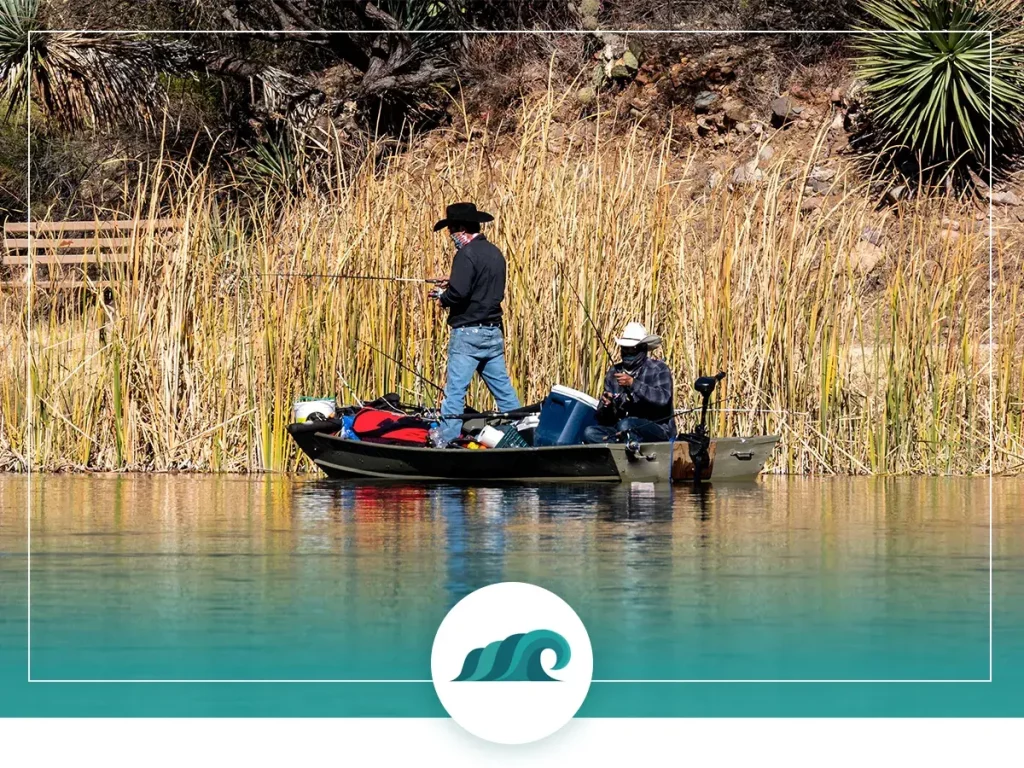
If you’re serious about fishing, a bow mount trolling motor is one of the best upgrades you can make to your boat.
One of the major advantages bow mount trolling motors have over their transom-mounted counterparts is how they propel your boat.
Transom mounted motors work similarly to typical outboard motors in that they push your boat through the water. Bow mount trolling motors pull your boat through the water – which gives you more precise control over your boat’s direction and side-to-side movement.
Bow mount trolling motors provide you with a secondary means of propulsion. You can use your outboard motor when you need to cover serious distances, and your trolling motor when you need fine-tuned precise control.
If you have a smaller craft – like a canoe, kayak, dinghy, or small Jon boat – then a transom-mounted trolling motor will offer you more than enough propulsion. On the other hand, larger craft will benefit from a bow-mounted trolling motor.
Lastly, many bow mount trolling motors offer foot and remote controls. This frees up your hands so you can keep fishing, rather than fiddling around with your trolling motor’s tiller.
Best Overall: MotorGuide X3 Bow Mount Foot-Control
MotorGuide’s been a household name in the bow mount trolling motors game for decades – and for good reason. They manufacturer some of the best quality, longest-lasting bow mount trolling motors on the market. With whisper-quiet operation, precise 5-speed controls, and a 2-blade weedless prop, this motor more than lives up to its pedigree.
Proprietary variable-ratio steering gives you a precise level of control and lets you position your boat in rough water and high winds. It works by reducing torque steer feedback, which increases precision and responsiveness. A directional control arrow gives you a clear indication of the prop direction.
An ergonomic heel-toe foot pedal controls the cable steering system, allowing you to keep your hands free for catching fish! Three different thrust levels are available (45, 55, and 70 lbs.), so you can match the right thrust level to your boat’s size. Keep in mind the 45 lbs. and 55 lbs. thrust models are 12 Volt, while the 70 lbs. model is 24 Volt.
The shaft uses a 2-piece design, with a stainless-steel upper shaft and a premium composite lower shaft that comes with a lifetime guarantee against breaking. Three different shaft lengths (36”, 45”, and 50”) are available, and you’ll also be able to make precise adjustments to your motor height with the hinged mount.
The X3 also offers excellent value. You’ll get top-tier performance, battery life, and construction quality at a price that’s hard to pass up.
Key Features
- Thrust: 45 (12 volt), 55 (12 volt) and 70 lbs. (24 volt)
- Shaft Length: 36”, 45”, and 50”
- Precision variable-ratio steering
- Foot control unit with directional prop indicator arrow
- Ultra-quiet operation thanks to composite locking pin and bushings
- Patented Variable Ratio Steering (VRS) lets you accurately position your boat even in wind, rough water, and other challenging conditions
- Foot-control unit with heel/toe design and directional indicator; lets you keep both hands for what really counts—reeling in the big one
- Rigid aircraft grade aluminum mount and stainless steel bushings ensure dependable performance
- Ultra-quiet on the water, thanks to the composite precision locking pin and composite bushings installed in key areas
- Freshwater
Prices pulled from the Amazon Product Advertising API on:
Product prices and availability are accurate as of the date/time indicated and are subject to change. Any price and availability information displayed on [relevant Amazon Site(s), as applicable] at the time of purchase will apply to the purchase of this product.
Best Electric / Wireless Steer: Minn Kota PowerDrive with i-Pilot Control
If you’re looking for a remote-controlled bow mount trolling motors that can be piloted from anywhere on your craft, you’ll have a tough time beating this one. The i-Pilot control unit includes Bluetooth connectivity, integrated GPS, a large easy-to-read LCD, and intuitive controls. Because the controls are completely wireless, you won’t need to sacrifice any deck space for a foot-control pedal.
In addition to autopilot and cruise control, it also includes Minn Kota ‘spot lock’ feature, which lets you set a spot on the water and remain there with the touch of a button. This feature is great for fishing in strong current or near shore.
Minn Kota’s digital maximizer provides up to 5 times longer run time on a single battery charge. The variable-speed motor lets you fine-tune your boat’s speed and maximize efficiency while fishing.
The composite shaft is virtually indestructible and guaranteed for life. A deploy assist level lets you easily raise and lower the prop when it’s time to move. The weedless wedge 2 prop utilizes swept-back flared blades for powering through the rough stuff.
This model features a 54” shaft with the 12V, 55 lbs. thrust motor. A larger 24V 70lbs. thrust model and longer shaft lengths are also available for larger boats.
Key Features
- Thrust: 55 lbs. (12 volt)
- Shaft Length: 54”
- Wireless remote with large LCD screen and intuitive controls
- Spot lock feature keeps your boat in the same spot
- Digital maximizer for greatly improved battery life and power efficiency
- Made in the USA
- 54 Shaft, 24v, 70 lbs Thrust
- i-Pilot GPS Trolling System: The most-trusted GPS system in fishing. i-Pilot uses GPS to control your trolling motor with incredible features that keep you on the fish. Set Spot-Locks, record paths, control speed and steering, and more. i-Pilot makes boat positioning and control automatic, and you can take command from its easy-to-read large LCD screen
- AutoPilot: Automatically navigate your boat in any direction you choose. Just point the head of your trolling motor in the direction you want to travel, activate AutoPilot, and your trolling motor will keep you on that heading automatically, even correcting for wind, waves and current
- Digital Maximizer: Provides up to 5 times longer run time on a single battery charge. These variable speed trolling motors let you dial in your exact speed, and they deliver only as much power as you need, helping to conserve your battery for a full day of fishing
- Weedless Wedge 2 Prop: With swept-back flared blades to power through anything without battery-draining chopping and hacking, the Weedless Wedge 2 is one of the most trusted props in fishing
- 2 Year Limited Manufacturer Warra
Prices pulled from the Amazon Product Advertising API on:
Product prices and availability are accurate as of the date/time indicated and are subject to change. Any price and availability information displayed on [relevant Amazon Site(s), as applicable] at the time of purchase will apply to the purchase of this product.
Best High End: Lowrance Ghost
Whisper-quiet, incredibly powerful, and astonishingly eye-catching, the Lowrance Ghost is the without a doubt the pinnacle of bow mounted trolling motors. Lowrance has packed the Ghost with integrated plug-and-play CHIRP sonar and DownScan Imaging right out of the box, a customizable foot pedal, and a 360° breakaway mount. Precise waypoint anchoring lets you pick a spot and stay put – no matter how windy it is.
The foot control unit uses fly-by-wire steering gives you the precision of cable steering without the wear and tear over time. You can customize the flip switch location on the foot pedal, save waypoints, adjust motor speed, switch between anchor and heading mode, and monitor battery life all with your toe and heel!
The ghost motor is built for compatibility and can be rigged with your boat’s existing 24V or 36V marine battery system. When rigged with 24 volts it will put out 97 lbs. of thrust, and 120 lbs. of thrust when attached to 36 volts.
The mount itself is one of its strongest points. It has a 360° breakaway mount that takes the brunt of any impacts and automatically realigns itself after a collision. An integrated stabilizer bar reduces movement when on plane, while a dual-action gas spring lets you launch and stow the motor nearly effortlessly.
While it certainly costs more than most bow mount trolling motors, if you’re looking for the cream of the crop – this is it.
Key Features
- Thrust: 97 lbs. (24 volt), 120 lbs. (36 volt)
- Shaft Length: 47”
- Whisper-quiet brushless motor provides best-in-class performance
- Plug and play Lowrance sonar with built-in HDI nosecone transducer
- Customizable foot pedal
- Motor emits zero electromagnetic interference
- Impact-resistant breakaway mount with an integrated stabilizer bar
- SILENT OPERATION: Move in close with Ghosts ultra-quiet brushless motor - fish will never hear you coming
- RELIABLE: After 4 years and 10,000 testing hours, we have delivered one of the quietest, most reliable, and most powerful trolling motors on the market
- PLUG-AND-PLAY LOWRANCE SONAR: Ghost includes an HDI nosecone transducer, giving you Lowrance CHIRP sonar and DownScan Imaging out of the box; Upgrade options include Active Imaging 3-in-1 nosecone with Lowrance CHIRP, SideScan and DownScan Imaging
- CONFIGURABLE PEDAL: Set preferences via shortcut buttons and a Flip Switch. Pedal Features: battery-level, Anchor/Heading mode, and quick access keys. Program shortcut keys to drop a waypoint or operate your Power-Pole shallow-water anchor
- INTERFERENCE FREE: Ghost’s brushless motor not only runs quieter than common brushed motors, but emits zero electromagnetic interference, ensuring the clearest, interference-free sonar views on your fish finder disp
Prices pulled from the Amazon Product Advertising API on:
Product prices and availability are accurate as of the date/time indicated and are subject to change. Any price and availability information displayed on [relevant Amazon Site(s), as applicable] at the time of purchase will apply to the purchase of this product.
Best Saltwater: MotorGuide Xi5 Wireless Saltwater
If you’re looking for a bow mount trolling motor for both saltwater and freshwater use, this fully-encapsulated corrosion-resistant motor makes an excellent choice. All electronics are sealed off and protected from saltwater and dust.
Wireless steering lets you control the unit from anywhere on your boat with the included remote. It includes precise ‘spot lock’ anchoring, jog, heading lock, and cruise control settings. Precision steering gears and low-friction bearings create responsive electric steering that’s significantly faster than the competition.
These bow mount trolling motors are available with or without MotorGuide’s Pinpiont GPS – which adds an ultra-precise receiver and 2 digital compasses for accurate GPS positioning. The unit is compatible with Lowrance, Garmin, Hummingbird, and Vexilar GPS screen units.
A tough composite shaft backed up with a lifetime warranty is designed to bend rather than break upon impact. It’s designed to take a beating from underwater rocks and stumps and keep on kicking. The 2-blade weedless prop circuit will automatically protect itself when stalled.
The mount features a unique gliding mechanism that aligns and guides the motor when stowing it.
Available in three different thrusts (55, 80, and 105 lbs.) as well as three corresponding voltages (12, 24, and 36 volt), you can easily find the ideal motor for your boat and existing wiring.
Key Features
- Thrust: 55 lbs. (12 volt), 80 lbs. (24 volt), 105 lbs. (36 volt)
- Shaft Length: 48”, 54”, and 72”
- Stealthy quiet motor operation
- Completely sealed electronic components for saltwater use
- Optional Pinpoint GPS
- Wireless steering offers convenient motor control
- Wireless handheld control lets you precisely operate the motor from anywhere on the boat
- Innovative mount features easy-to-read LED dashboard that lets you quickly check the status of four key functions in any light conditions
- Pinpoint GPS is the industry’s most accurate GPS, provides 3 times precision control and a tighter hold on your anchor point
- High-efficiency electronics are fully encapsulated in high-tech coating, making them impervious to water and dust
- Saltwater motor delivers 105 pounds of peak thrust and has a 72-inch-long composite shaft with a 3-blade Machete III Glass-Filled propeller
- Versatile 36-volt motor has a maximum draw of 41 a
Prices pulled from the Amazon Product Advertising API on:
Product prices and availability are accurate as of the date/time indicated and are subject to change. Any price and availability information displayed on [relevant Amazon Site(s), as applicable] at the time of purchase will apply to the purchase of this product.
Budget Pick: Watersnake Shadow Bow Mount Foot Control
If you’re looking for a bow mount trolling motor without spending the kid’s college fund, Watersnake makes an excellent budget-priced model. The freshwater model features a heel/toe foot control pedal, a corrosion-free composite shaft that bends on impact, and a 3-blade weedless prop for chewing through heavy weeds.
These bow mount trolling motors are fairly quiet, responsive, and at several hundred bucks less than the competition, you’re getting excellent value for your dollar. Variable speed controls give you precision speed and directional control without having to keep your foot on the pedal, while all the mounting hardware you need comes included with purchase.
Keep in mind you won’t be getting advanced features like GPS or spot lock, but at this price that’s to be expected. Both 44 and 55 lbs. thrust models are available, both running on 12 volts of power.
Key Features
- Thrust: 45 lbs. (12 volt), 55 lbs. (12 volt)
- Shaft Length: 48”, 54”
- Quiet, powerful and efficient motor
- Composite shaft that bends on impact
- Heel/toe foot control pedal
- VARIABLE SPEED: Control the direction or speed of your boat with a touch of your foot with the variable speed foot control unit
- CORROSION FREE: All models are fitted with stainless steel propeller shafts, propellers and corrosion free composite shafts that flex on impact
- WEEDLESS DESIGN: The 3-blade propeller has a weedless design that can chew through the heaviest of underwater grasses and marsh
- THRUST: Features a 44-pound thrust while running on 12-volts of power and a 48-inch shaft
- SATISFACTION GUARANTEE: Necessity is the mother of invention. Created by anglers to be used by anglers. If you’re not satisfied with your Watersnake Electric Motor, contact your distributor to be taken care
Prices pulled from the Amazon Product Advertising API on:
Product prices and availability are accurate as of the date/time indicated and are subject to change. Any price and availability information displayed on [relevant Amazon Site(s), as applicable] at the time of purchase will apply to the purchase of this product.
Bow Mount Trolling Motors Breakdown
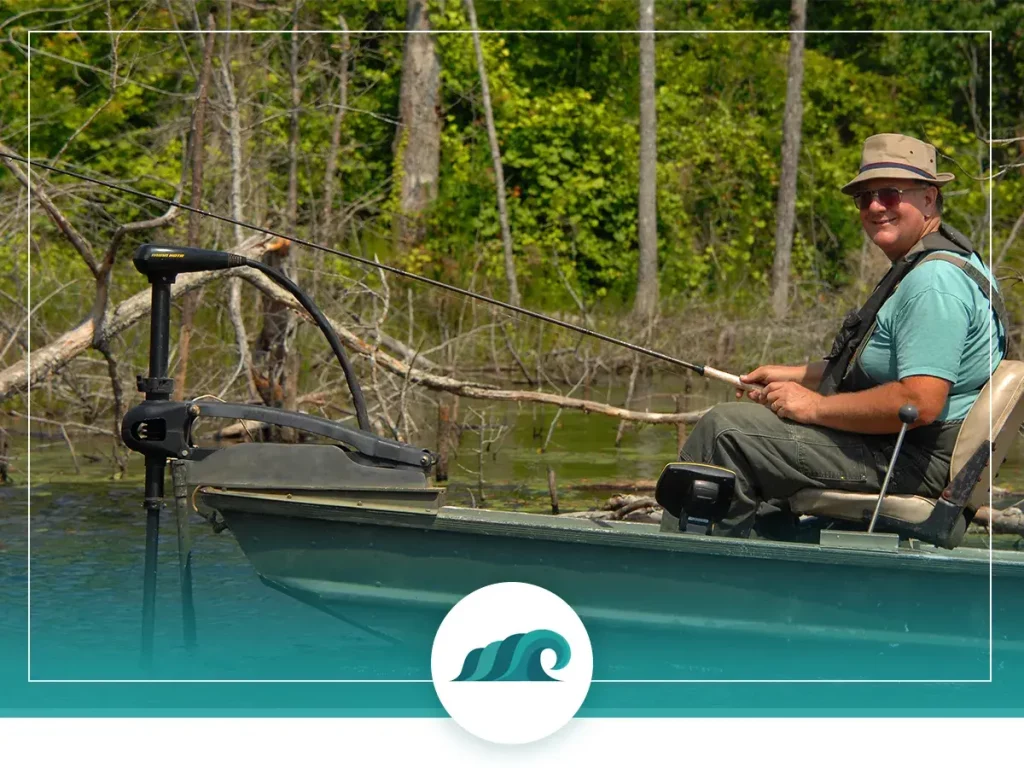
Bow mounted trolling motors are self-contained propulsion units that mount to the bow of your boat. They require a flat mounting surface and enough space in the bow for the mount and controls.
These bow mount trolling motors are often mounted on bass boats and are used as a secondary means of propulsion in addition to your outboard motor. Bow mount trolling motors offer precise control while trolling, drifting, or staying put in current.
Newer models offer quiet operation, efficient battery usage, and easy to use mounts for deploying and stowing.
How to pick the right bow mount trolling motor?

There’s a lot to consider when it comes to choosing a bow mount trolling motor.
What sized motor? Shaft length? What voltage will I need? Should I go with foot control or wireless?
I’ll break down what you’ll need to know when choosing bow mount trolling motors, so you can make the right choice the first time.
Motor Thrust
Thrust refers to the amount of power generated by the motor as it moves your boat through the water.
It’s measured in pounds of thrust and is one of the most important factors to consider when choosing a motor. Too weak, and your motor will struggle to pull your boat through the water, while too much will be overkill and add unnecessary weight and cost.`
Luckily, there’s a simple rule-of-thumb calculation for determining the right motor size – 2 pounds of thrust per 100 pounds of boat weight. Put another way simply perform the following calculation:
Thrust Calculation: Total boat weight / 50 = Ideal pounds of thrust
If you frequently fish in rough water, fish with multiple partners, or store a lot of gear on board, then size up by an additional 10%. Also, if you’re in between sizes, go with the larger motor. Extra power is much less of an issue than too little.
If you don’t know your boat’s exact weight, you can use this chart as an approximate guide:
| Boat Length | Pounds of Thrust Required |
| 12-13′ | 30 |
| 14′ | 32 |
| 15′ | 36 |
| 16′ | 40 |
| 17′ | 50 |
| 18′ | 55 |
| 19′ | 65 |
| 20-21′ | 74 |
| 22′ | 101 |
Controls
Choosing between foot, hand, and wireless electrical control can be a difficult decision, especially if you don’t have much experience with trolling motors.
Foot control motors use a foot pedal attached to a cable to control the motors speed and direction. This control type allows you to operate the unit completely hands-free, so you can focus on catching fish. Most pedals use a heel/toe design that allows you to adjust speed and change direction with a simple foot tap.
Foot control units do require you to mount the pedal and control wire somewhere on your hull – so they’ll take up more space than the other types. Because they require physical cables and mechanical pedals, there’s more of a chance of something malfunctioning when you’re on the water.
Hand control motors are operated using a tiller handle to adjust the speed and direction of the motor. You’ll often find these controls on transom mount trolling motors, but some cheaper bow mount models also use them.
Hand controls are reliable and take up very little space, but will require you to physically control the tiller handle to change direction or adjust speed. This means you’ll need to stay close to the trolling motor and sacrifice the versatility of hands-free operation.
Wireless control uses a small hand-held remote control to steer the trolling motor. These units allow you to control the motor from anywhere in your boat, and keep your bow completely clutter-free. Of course, you have to operate the remote control with one of your hands, so they’re not completely hands-free like foot pedals. They also tend to be on the expensive side.
Some models offer multiple control options, so you can control the motor either through a foot pedal or a hand-operated remote control. These units also tend to be on the higher-priced side.
Shaft Length
Another key consideration is the motor’s shaft length. Too short and the prop may not be fully submerged, too long and you’ll hit bottom in shallow water.
An easy method to determine the right shaft length is measuring the distance from your bow to the waterline – and then add 12” to 20” to that number. Similar to calculating thrust, you’ll want to go a little longer if you frequently fish in rough water.
Voltage
Bow mount trolling motors come in three different voltage levels: 12, 24, and 36.
12-volt models require the least amount of electrical current and run off a single 12V marine battery. 24-volt models require two 12v batteries, while 36-volt models require three.
12-volt bow mount trolling motors are the least expensive and provide lower thrust levels. Most 12-volt models provide 55 pounds of thrust or less, so they’re better suited to smaller craft.
24- and 36-volt models will cost more, but will provide higher thrust levels in the 55 to 100+ lbs. range. They also draw similar amp levels, so they’ll last longer on a single charge.
Saltwater vs. Freshwater
Saltwater bow mount trolling motors feature sealed electrical circuits and corrosion-resistant components that won’t break down in saltwater. Freshwater motors don’t have these features, and using them in the ocean can cause damage to the motor and may even void the warranty.
If there’s any chance you’ll use your bow mount trolling motor in saltwater, then going with a saltwater motor makes sense. You can also use these motors in freshwater without worry.
Extra Features
Bow mount trolling motors manufacturers have added a ton of extra functionality to their higher-end models over recent years. Whereas these motors were once little more than simple means of propulsion, newer models feature integrated GPS, sonar and down-vu, Wi-Fi connectivity, self-directional operation, and spot-lock.
Mounting
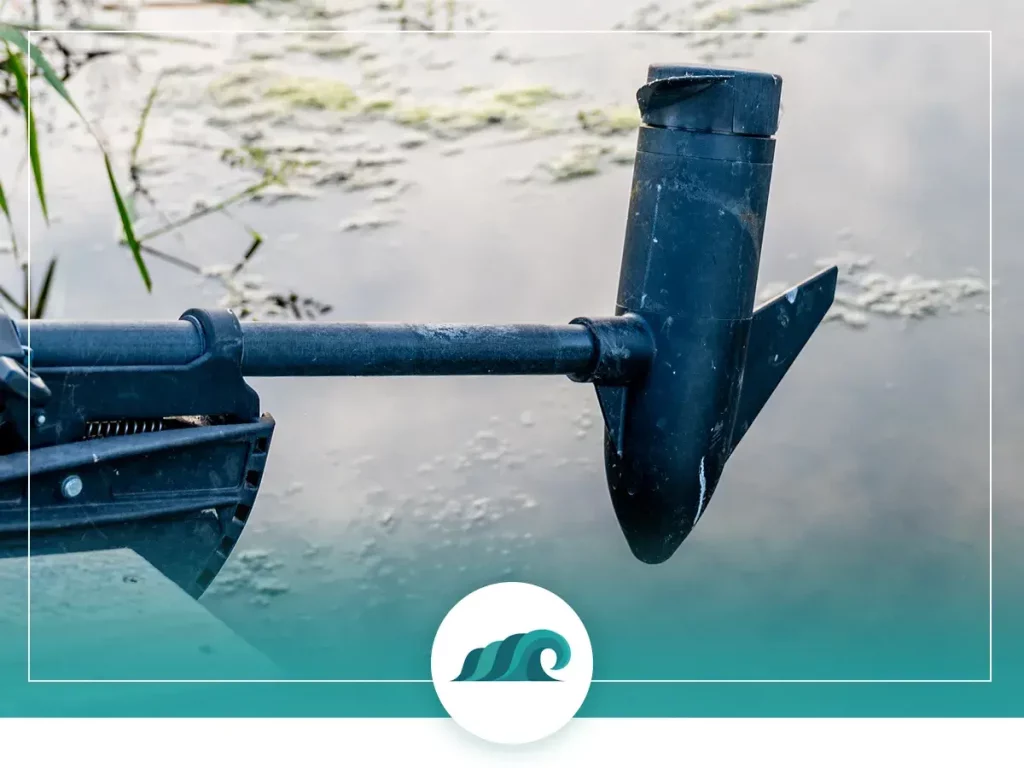
Mounting a bow mount trolling motor requires a flat space in the bow to attach the mounting base. Most motors come with mounting hardware and instructions, so getting everything set up won’t be too much of a chore.
One of the best accessories you can get for a bow mount trolling motor is a quick-release mounting bracket. These 2-piece brackets mount directly to the hull and allow you to quickly detach and remove the entire motor in seconds. This makes swapping the motor between different boats and removal for long term storage a breeze.
Check out these quick-release mounts for well-made and versatile bow mount trolling motors solutions:
- Minn Kota: Minn Kota Aluminum Quick Release Bracket
- Motorguide: Motorguide Aluminum Quick-Release Bracket Kit
Check out this short video for a look at installing a trolling motor in the bow:
Maintenance

Maintaining bow mount trolling motors is typically pretty low effort, but following a few key steps will ensure you get the most out of your motor:
- Give the entire prop and shaft a good rinse after use. This is especially important for saltwater motors.
- Inspect the prop and clean any weeds or fishing line that may have become entangled during use.
- Disconnect the motor from your marine battery whenever it’s not in use for a prolonged period of time. Also, check for corrosion which can impact performance.
- Apply some lubricant spray to the prop, shaft, and other moving parts every so often.
- Make sure to fully charge your batteries after each use.
The Basics of Controlling and Navigating with Bow Mount Trolling Motors
Using bow mount trolling motors is an effective way to control the direction and speed of your boat on the water. This type of electric motor is easy to install on the front or back of any boat, making it a popular choice for many anglers.
It gives you more control over your vessel, allowing you to move at variable speeds without making much noise. In order to get the most out of your bow mount trolling motor, it’s important to understand how to properly control and navigate with the device.
Installing the Motor
Before attempting to control and navigate with your bow mount trolling motor, you first need to install it on your boat. Start by attaching the mounting bracket to either the starboard or port side of your boat’s bow.
If you are new to boating or aren’t sure which side is best, consult with a marine technician or experienced angler. You will then need to attach the trolling motor to the mounting bracket. Before use, make sure that all bolts and screws are tightened securely as loose parts can damage both the vessel and drive system.
Choosing Your Speed
The speed of your bow mount trolling motor should be determined based on factors such as wind condition, desired destination, safety regulations for powered boats in your area, and water depth.
With some models featuring up to 24 separate power settings, you can easily adjust the speed as needed depending on these variables. Generally speaking, lower speeds are ideal for shallow waters while higher speeds may be necessary when navigating further distances in deeper water.
Navigating Safely
Before setting off into unfamiliar waters with your trolling motor installed, always map out where you plan on going ahead of time just in case something unexpected happens such as a technical issue or engine problem.
Make sure that any passengers onboard are aware of basic safety guidelines such as remaining seated while moving at speed or keeping their hands inside while docking near shorelines. There may be certain laws in place regarding boating during certain times of the day, so always keep these guidelines in mind while operating your vessel with a bow mount trolling motor attached.
Troubleshooting Common Issues with Bow Mount Trolling Motors
Bow mount trolling motors are designed to be durable and reliable, however, they can experience issues just like any other boat accessory. In order to keep your motor running smoothly, it’s important to be aware of common problems that may arise.
One of the most frequent issues is a motor spinning too slowly or stopping completely. This can be caused by either low battery levels or loose electrical connections. In the case of a loose connection, check all wires for corrosion or disconnected wiring and replace them as needed.
If the issue is low battery power, you may need to charge your batteries for an extended period of time in order to get the full performance out of your trolling motor again.
Another issue with bow mount motors involves calibration errors. Calibration checks ensure that the motor is operating at its fullest potential based on the speed settings programmed into its controller. To recalibrate, simply refer to your manufacturer’s manual and follow their instructions on how best to adjust and reset the system.
You may also experience difficulty when attempting to control direction using your bow mount motor. This could be due to the buildup of weeds around the propeller blocking it from spinning properly. To fix this, remove any visible debris from around the propeller shaft before reattaching and testing again.
Additionally, worn-out parts such as bearings can also lead to poor directional control so these should be checked periodically and replaced if necessary in order to maintain maximum performance levels.

